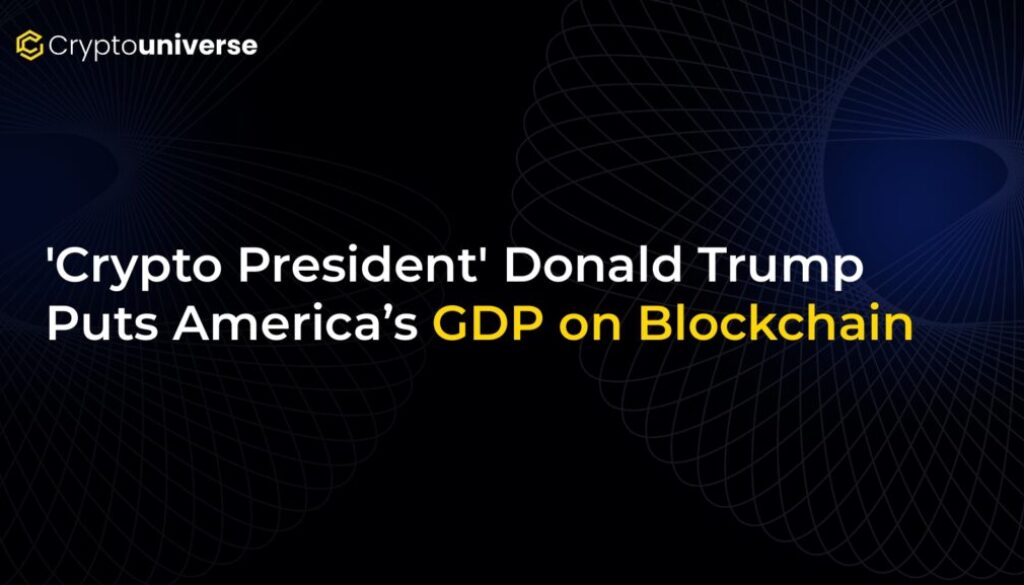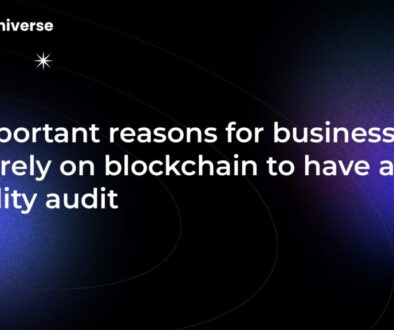‘Crypto President’ Donald Trump Puts America’s GDP on Blockchain

‘Crypto President’ Donald Trump Puts America’s
In a move that has sent shockwaves through both Washington D.C. and the global financial markets, President Donald Trump has officially mandated that the United States’ Gross Domestic Product (GDP) data be recorded and verified on a blockchain. The unprecedented decision, announced in a late-night social media post, marks the most significant integration of blockchain technology into a major government function to date and solidifies Trump’s self-styled moniker as the ‘Crypto President’.
The initiative, effective immediately, will see the quarterly economic data released by the Bureau of Economic Analysis (BEA) cryptographically signed and published on a purpose-built, government-managed blockchain ledger. This move aims to create an immutable and transparent record of the nation’s economic health, a goal the administration claims will combat misinformation and enhance public trust.
What Does Putting GDP on a Blockchain Actually Mean?
For decades, the process of compiling and releasing GDP data has been a complex, centralized affair handled by federal agencies. While highly professional, the system is opaque to the average citizen. By moving this critical economic indicator to a blockchain, the Trump administration is fundamentally changing how this data is stored and accessed.
In simple terms, here’s what this entails:
- Immutability: Once the quarterly GDP data is recorded on the blockchain, it cannot be altered or deleted. Every entry is permanent and time-stamped, creating a tamper-proof historical record.
- Transparency: The public, journalists, and financial analysts will be able to independently verify the data by accessing the public ledger. This eliminates reliance on a single source of truth and allows for greater scrutiny.
- Streamlined Auditing: The cryptographic nature of the blockchain will make auditing processes more efficient and secure, reducing the potential for human error or manipulation.
Sources within the administration suggest this is the first step in a broader plan to leverage distributed ledger technology for securing critical national data and improving governmental efficiency.
The Rationale: A Push for ‘Unalterable Economic Truth’
President Trump has long railed against what he terms “fake news” and manipulated statistics. This initiative is being framed as the ultimate solution—a technological guarantee of factual accuracy for one of the world’s most-watched economic metrics.
The White House’s official statement highlighted three key motivations:
- National Security: Securing America’s core economic data on a decentralized ledger is being presented as a defense against cyber-attacks from foreign adversaries.
- Economic Leadership: By adopting blockchain at the highest level, the administration aims to signal that the United States is the global hub for financial innovation, encouraging developers and capital to flow into the country.
- Restoring Trust: In an era of deep political division, the administration argues that a technologically enforced source of truth can help depoliticize economic reporting.
Market Reaction: Crypto Soars as Wall Street Scrambles
The announcement triggered immediate and dramatic reactions across financial markets. The cryptocurrency sector experienced a massive surge, with Bitcoin (BTC) and Ethereum (ETH) prices jumping by double-digit percentages within hours. Tokens associated with data verification and government technology, or “GovTech,” saw even more explosive gains.
Conversely, Wall Street’s reaction has been a mixture of awe, confusion, and skepticism. While some tech-forward analysts have praised the move as visionary, traditional economists are raising concerns about the practicalities of implementation and the potential risks of relying on a nascent technology for such a critical function.
“This is either a stroke of political genius or a reckless technological gamble,” one prominent market analyst commented. “There is no middle ground. The history books will remember this moment.”
Challenges and Questions Remain
Despite the bold vision, the path forward is fraught with challenges. Critics and technology experts are already pointing out potential pitfalls:
- Centralization Concerns: Is this a truly decentralized public blockchain or a private, permissioned ledger controlled by the government? The distinction is crucial for true transparency.
- Technical Hurdles: The complexity of accurately inputting vast amounts of economic data onto a blockchain without error is immense. The classic “garbage in, garbage out” problem still applies.
- A Solution in Search of a Problem? Many question whether the existing system of reporting GDP was fundamentally broken or if this is a high-tech political statement rather than a necessary reform.
Regardless of the debates, one thing is certain: the intersection of politics, finance, and technology has reached a new frontier. By putting America’s


